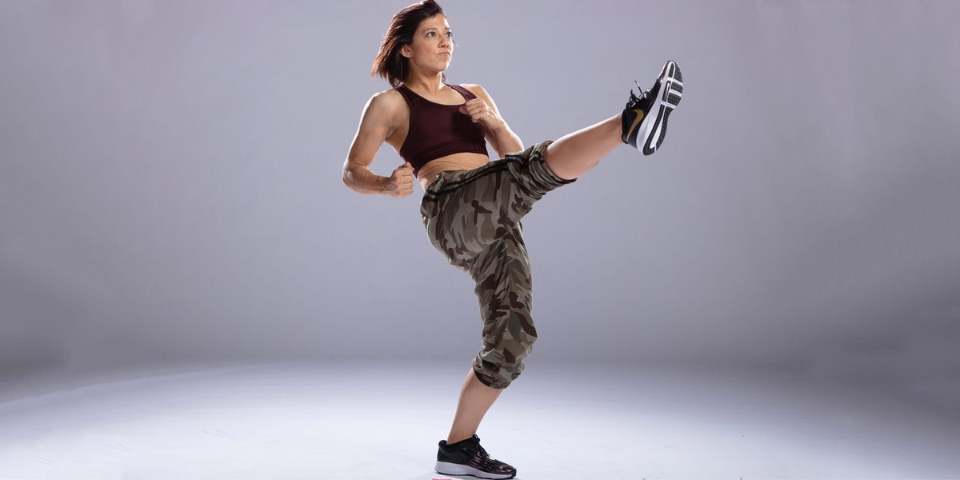The benefits of having a strong core go beyond posting hot mirror selfies of your washboard abs on Instagram (though that is a plus). Building a strong core can help improve balance and stability, alleviate back pain, give you better posture, and make everyday tasks easier.
If you’ve ever had really sore abs after a workout — the kind where just getting up from a chair makes you feel like you’ve been punched in the gut — then you know firsthand that your core muscles support almost every movement you make.
And one of the best ways to improve your core strength is with targeted kicking exercises that’ll give you optimal results.
How Can Kicking Exercises Strengthen Your Core?
“MMA kicks are such a great way to strengthen your core without realizing you’re even working your core,” says Elanit Sellers, executive director of fitness development at BODi. “Kicks require so much core engagement because they require a lot of balance. When you put your body in a position of instability, your core must be engaged to kick and stay balanced doing it. In return, strengthening your core.”
The Best Kicking Exercises for a Great Core Workout
Here are four basic kicks that can form the foundation of your core workout.
1. Front kick
Front kicks not only work your core, but they also work your quads, hamstrings, and glutes, says Hutyrova.
- Start in a fighting stance, with your supporting leg slightly bent in front. (The clip above starts in a runner’s lunge for an extra challenge.)
- Engage your core, shift all your weight to your supporting leg, and lift your opposite (kicking) knee up in front of you, around hip height.
- Keeping your toes flexed, thrust your kicking foot forward as if you’re trying to strike a target with the ball of your foot.
- Return to starting position.
2. Side kick
- Start in a fighting stance, but with your supporting leg in back and your kicking side facing the target.
- Pivot your supporting foot. “Instead of having your foot face forward, you want to have it facing away from your target,” Hutyrova says.
- Lift the knee of your kicking leg diagonally across your body toward your chest, then extend your leg with your heel up and toes down, as if you’re trying to strike a target with the outside of your foot.
- Return to starting position.
3. Hook kick
Hook kicks start similarly to a side kick, but you’ll extend your leg slightly to the left of your target (if you’re kicking with your right leg), then quickly snap your heel back to hit your target. Bring your heel to your butt before setting it down.
“You kick out, around to a round kick chamber, so it really works the whole range of your muscles,” says Hutyrova.
4. Back kick
In addition to your core, back kicks also work your glutes and lower body. For proper form, Hutyrova says, your toes should be facing down on your kicking leg, and your supporting leg should be facing away from your target.
“And always look where you’re going!” she adds.
How Can You Add Power to Your Kick?
A tight core will give the stability you need for a more powerful kick, so stay focused on keeping your core engaged.
If you want to learn how to kick higher, Friedman recommends you “incorporate flexibility training into your routine. Increasing your flexibility will allow for more height.”
Take things slow, however. “You want to make sure your form is really good before you try to kick higher,” says Thekla Hutyrova, stunt performer and Rough Around the Edges trainer. When you’re focused on kicking as high as possible, it’s easy to lose sight of your form, thus putting you at higher risk for injury.
Hutyrova recommends the following tips for proper form during a kick:
- Keep the knee on your “kicking” leg pointed in the direction you want to kick.
- Keep your “standing” foot flat on the ground — don’t lift up on your toes. And avoid sickling your feet, a ballet term for turning your toes inward.
- When you’re doing side kicks, keep that booty down to maintain proper alignment.
